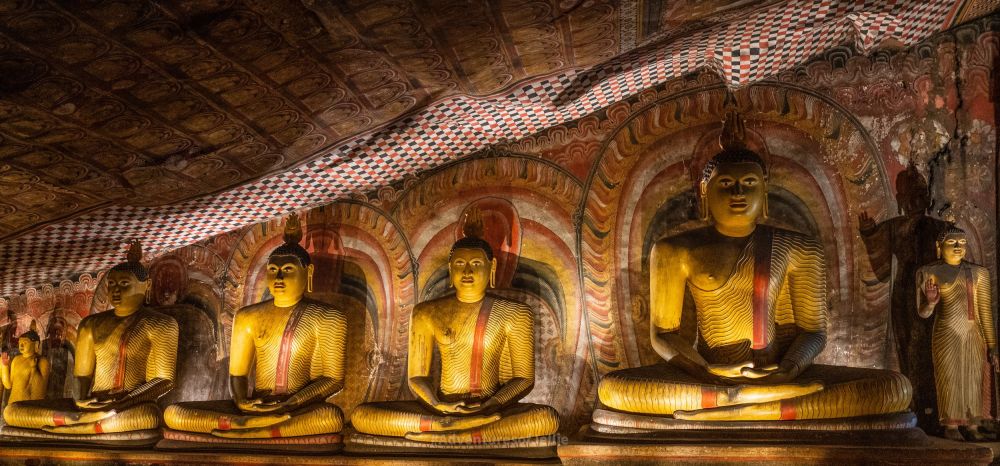

The Dambulla Cave Temple, also known as the Golden Temple of Dambulla, is one of Sri Lanka's most cherished historical landmarks and a significant hub for pilgrimage and tourism in the region. It has been the focus of spiritual and touristic activities for over 22 centuries, making it one of the oldest and continuously inhabited places on the island.
The history of the Dambulla Cave Temple as a place of worship dates back to the 1st century BCE. It is believed that King Valagamba (also known as Vattagamini Abhaya) took refuge in this complex of caves during his exile from Anuradhapura. After reclaiming his throne, the king established the magnificent rock temple as a token of gratitude. The site has since expanded with contributions from various kings throughout Sri Lankan history.
The temple complex consists of five main caves, each adorned with religious and historical paintings and sculptures, predominantly of the Buddha. The caves hold a total of 153 Buddha statues, as well as statues of Sri Lankan kings and gods. The murals covering the cave ceilings and walls depict scenes from the Buddha's life and important events in Sri Lankan history, covering an area of approximately 2,100 square meters.
Due to its exceptional cultural and archeological value, Dambulla Cave Temple was designated a UNESCO World Heritage Site in 1991. The site is officially recognized under the name "Golden Temple of Dambulla." This acknowledgment has contributed to an increase in the number of tourists and pilgrims who visit the temple from all over the world.
In recent years, the tourism industry in Sri Lanka has bounced back from various challenges, including civil conflict and natural disasters. Dambulla Cave Temple remains a must-visit destination for those traveling to Sri Lanka. Visitors are captivated by the serene and spiritual atmosphere of the cave complex, combined with the stunning vista of the surrounding countryside.
As a part of the latest tourism trends, there is a growing emphasis on sustainable tourism. Efforts are being made to ensure that tourist activities do not harm the caves' delicate paintings or disrupt the site's sacred ambiance. Tourists are encouraged to engage with the local community, understand the cultural significance of the site, and contribute to the conservation efforts of this age-old sanctuary.
Dambulla Cave Temple is accessible to visitors throughout the year. However, the best time to visit the temple is during the cooler hours of the early morning or late afternoon. The site is generally less crowded during weekdays, allowing for a more peaceful experience. Visitors should also note that as a place of worship, appropriate attire is required; shoulders and legs should be covered, and shoes must be removed before entering the temple complex.
The Dambulla Cave Temple continues to enchant those who step into its history-laden chambers. Whether you are a history buff, spiritual seeker, or casual tourist, the temple offers a timeless journey through Sri Lanka's rich cultural tapestry. As tourism evolves, the commitment to preserving such treasures ensures that they will continue to inspire awe for generations to come.